Throughout history, mankind has been intrigued by the age of the universe. While it’s impossible to simply check its passport for a birthdate, modern science has made significant progress in unraveling this mystery. However, these advancements have only occurred in recent times.
In ancient times, the sages of Babylon and Greece believed that the universe was eternal and unchanging. Hindu chroniclers in 150 BC even calculated that it has been exactly 1,972,949,091 years old (which, by the way, was not too far off in terms of magnitude!).
Fast forward to the 17th century, when English theologian John Lightfoot meticulously analyzed biblical texts and determined that the creation of the world occurred in 3929 BC. A few years later, Irish bishop James Usher revised this date to 4004 BC.
Even the founding fathers of modern science, Johannes Kepler and Isaac Newton, delved into this subject. They relied not only on the Bible but also on astronomy to arrive at their calculations, which were surprisingly similar to those of the theologians. Kepler estimated the creation to have taken place in 3993 BC, while Newton’s calculation was slightly earlier in 3988 BC.
In our more enlightened era, scientists use different methods to determine the age of the Universe. However, to understand these methods in their historical context, let’s first examine our own planet and its cosmic surroundings.
Divination using stones
Starting from the second half of the 18th century, scientists initiated the process of estimating the age of the Earth and the Sun through the use of physical models. As a result, in 1787, the French naturalist Georges-Louis Leclerc postulated that if our planet was initially a sphere of molten iron, it would have required anywhere between 75 to 168 thousand years to cool down to its current temperature. Approximately 108 years later, the Irish mathematician and engineer John Perry reevaluated the thermal history of the Earth, determining its age to be around 2-3 billion years. At the beginning of the 20th century, Lord Kelvin proposed that if the Sun undergoes gradual contraction and solely emits gravitational energy, its age (and consequently, the maximum age of the Earth and other planets) could be several hundred million years. However, during that time, geologists were unable to confirm or disprove these estimations due to the absence of reliable geochronology methods.
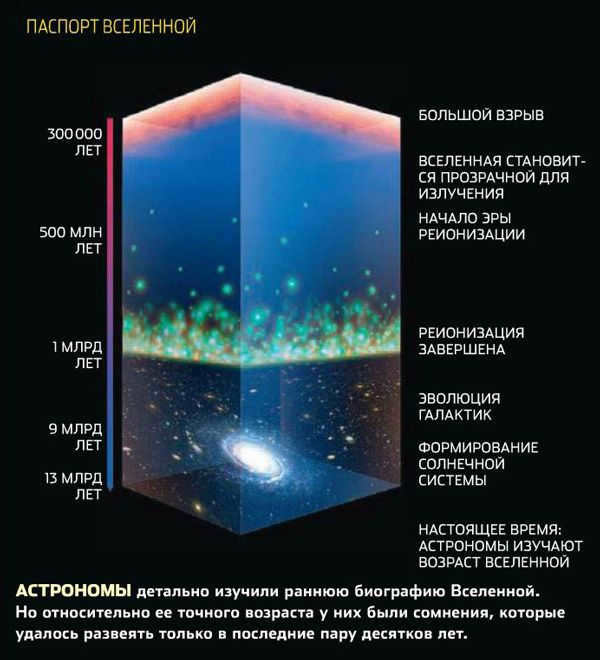
Thanks to modern helioseismology, we are able to directly determine the age of the Sun. Based on the most recent data, it is estimated to be around 4.56-4.58 billion years old. This means that from the beginning of the gravitational condensation process of the protosolar cloud to the present day, no more than 4.6 billion years have passed. However, the solar matter contains a variety of elements that are heavier than helium, and these elements were actually formed in the thermonuclear furnaces of massive stars from previous generations. These stars eventually burned out and exploded as supernovae. This suggests that the existence of the universe greatly surpasses the age of our solar system. To fully comprehend the extent of this excess, we must first explore our own galaxy and then venture beyond.
The lifespan of our Galaxy can be ascertained using various approaches, but we will focus on the two most dependable ones. The initial technique relies on monitoring the brightness of white dwarfs. These small (approximately the size of the Earth) and initially extremely hot celestial bodies signify the ultimate phase of existence for nearly all stars except the most massive ones. To transform into a white dwarf, a star must fully consume all of its thermonuclear fuel and endure multiple cataclysms – such as temporarily becoming a red giant.
A typical white dwarf is primarily composed of carbon and oxygen ions surrounded by a degenerate electron gas. It possesses a thin atmosphere that is predominantly made up of hydrogen or helium. The surface temperature of a white dwarf can range from 8,000 to 40,000 K, while the central region can reach temperatures in the millions or even tens of millions of degrees. Theoretical models suggest that white dwarfs can also consist mainly of oxygen, neon, and magnesium, which are formed when stars with masses ranging from 8 to 10.5 (or even up to 12) solar masses undergo certain conditions. However, the existence of such white dwarfs has not been confirmed yet. The theory also proposes that stars with at least half the mass of the Sun eventually evolve into helium white dwarfs. These stars are quite abundant, but they burn hydrogen at an extremely slow rate, allowing them to live for tens or hundreds of millions of years. Thus, they have not had sufficient time to deplete their hydrogen fuel. The few helium white dwarfs that have been discovered so far exist in binary systems and have formed through a different process.
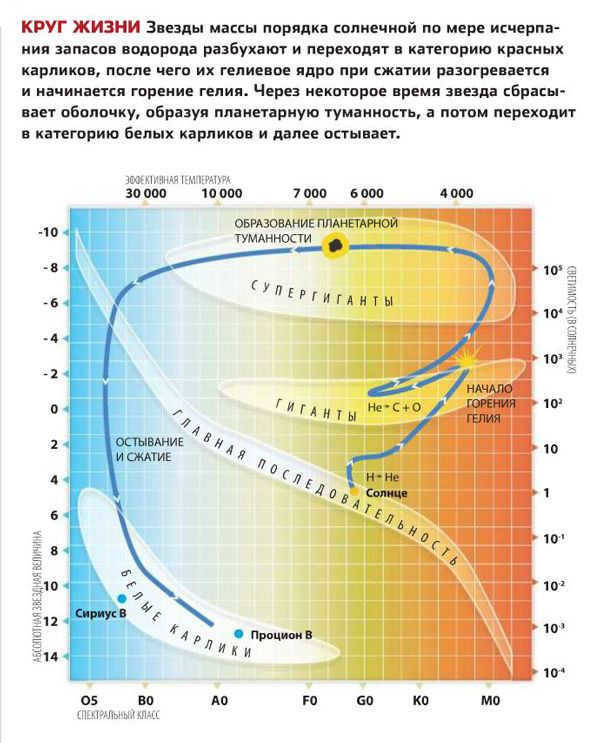
That is the maximum age limit. What can be said about the minimum age limit? The Hubble Space Telescope observed the coldest white dwarfs in 2002 and 2007. According to calculations, these white dwarfs are estimated to be 11.5-12 billion years old. Additionally, we need to consider the age of their predecessor stars, which ranges from half a billion to a billion years. Therefore, it can be concluded that the Milky Way is at least 13 billion years old. Thus, the final estimate of the Milky Way’s age, based on the observation of white dwarfs, is approximately 13-15 billion years.
The timekeeper of the natural world
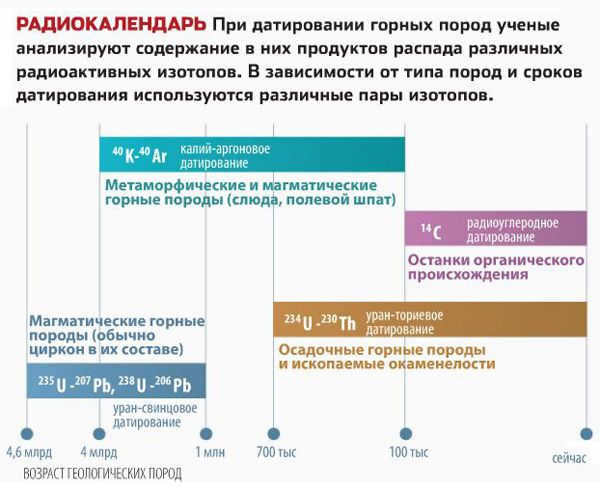
Globular evidence
The second approach involves examining globular star clusters situated in the outer regions of the Milky Way and circling around its central core. These clusters consist of hundreds of thousands to over a million stars that are held together by their mutual gravitational attraction.
Globular clusters are found in nearly all large galaxies and can number in the thousands. While new stars are not typically formed within these clusters, there is an abundance of older stars. Our Galaxy has around 160 registered globular clusters, with the potential for the discovery of two or three dozen more. The precise mechanisms behind their formation remain somewhat unclear, but many are believed to have emerged shortly after the birth of the Galaxy itself. Consequently, determining the age of the oldest globular clusters provides a lower limit for the age of the galaxy.
The ACS camera of the Hubble Space Telescope was used by a team of astronomers three years ago to complete this research. They monitored 41 globular clusters in our Galaxy and discovered that their average age is 12.8 billion years. The two clusters that set the record for age were NGC 6937 and NGC 6752, which are located 7200 and 13,000 light-years away from the Sun, respectively. These clusters are almost certainly older than 13 billion years, and it is most likely that the second cluster has a lifetime of 13.4 billion years (although there is a margin of error of plus or minus one billion).
However, it is believed that our Galaxy is older than its clusters. The first supermassive stars in the Galaxy exploded in supernovae and released various elements into space, including the stable isotope of beryllium – beryllium-9. When the globular clusters started forming, their newborn stars already contained beryllium, and the more recent the clusters, the higher the beryllium content. By analyzing the beryllium content in the atmospheres of stars in the NGC 6937 cluster, it has been determined that these clusters are 200-300 million years younger than the Galaxy. Therefore, it can be reasonably assumed that the age of the Milky Way is over 13 billion years and potentially reaches 13.3-13.4 billion years. This estimate aligns closely with the age calculated from observations of white dwarfs, but it is derived through a different methodology.
The Discovery of Hubble’s Law
The question of the age of the universe was finally addressed in the early 1900s. During the late 1920s, Edwin Hubble and his assistant Milton Humason were working diligently to determine the distances to numerous nebulae located beyond our own Milky Way galaxy, which had recently been recognized as separate galaxies.
These galaxies are in motion away from the Sun, with their radial velocities being measured through the redshift of their spectra. Despite the large margin of error in determining the distances to most of these galaxies, Hubble discovered that they were generally proportional to their radial velocities. This finding was documented in a paper published in the early months of 1929. Two years later, Hubble and Humason corroborated this conclusion through observations of additional galaxies, some of which were located over 100 million light-years away.
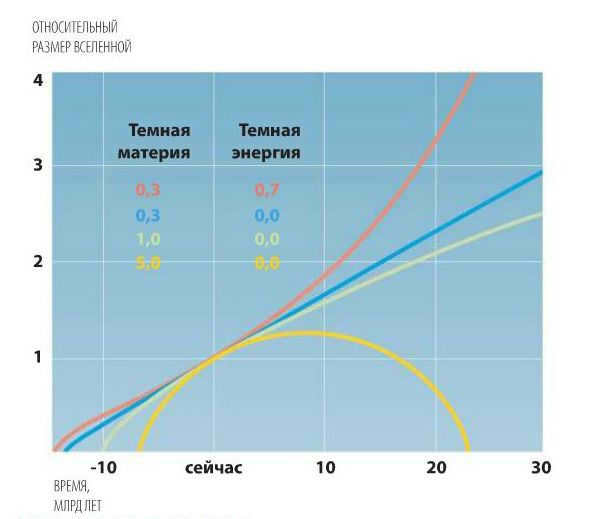

Approximation to the past
Depending on the correlation of different elements, the graph representing the size of the Universe assumes distinct forms in both the future and the past, influencing calculations of its age. Present observations indicate an exponential expansion of the Universe (depicted by the red graph). Image: Popular Mechanics
This information served as the foundation for the well-known equation v = H0d, commonly referred to as Hubble’s law. Here, v represents the radial velocity of the galaxy relative to Earth, d represents the distance, and H0 is a proportional coefficient. It is important to note that the dimensionality of H0 is inverse to that of time, which differs from its previous designation as the Hubble constant, as its value has changed over time. Initially, Hubble and other astronomers were hesitant to assign a physical meaning to this parameter. However, in 1927, Georges Lemaître demonstrated that the general theory of relativity allows for the interpretation of galaxy separation as evidence of the universe’s expansion. Four years later, Lemaître took this idea further by proposing that the universe originated from a tiny, point-like entity, which he referred to as an atom for lack of a better term. This primordial atom could have remained static indefinitely, but its “explosion” resulted in the expansion of space and the emergence of matter and radiation, eventually leading to the present-day Universe. In his first paper, Lemaître derived an equation similar to Hubble’s formula and obtained a similar value for the coefficient of proportionality between distances and velocities using the available data on galaxy velocities and distances at that time. However, his paper was initially published in French in a relatively unknown Belgian journal and went unnoticed. It wasn’t until 1931, after an English translation was published, that most astronomers became aware of Lemaître’s work.
Based on the work of Lemaître and subsequent research by Hubble and other cosmologists, it was deduced that the age of the Universe, starting from the moment of its expansion, is directly related to the value 1/H0, now known as the Hubble time. The specific relationship between these factors depends on the model of the universe used. Assuming a flat Universe filled with gravitating matter and radiation, the age can be calculated by multiplying 1/H0 by 2/3.
That’s when the issue arose. Based on measurements from the Hubble and Humason, it was determined that the numerical value of 1/H0 was roughly 1.8 billion years. This implied that the Universe came into existence 1.2 billion years ago, which clearly contradicted even the most conservative estimates of the Earth’s age at that time. The problem could have been resolved by assuming that galaxies were moving apart at a slower rate than Hubble believed. Eventually, this assumption was validated, but it still did not fully address the problem. According to data gathered by the end of the previous century through optical astronomy, 1/H0 ranged between 13 and 15 billion years. Therefore, the discrepancy persisted because the Universe was and still is considered to be flat, and two-thirds of Hubble’s time is far shorter than even the most conservative estimates of the Galaxy’s age.
A world devoid of matter and fields
Based on recent measurements, scientists have determined that the Hubble time has a lower limit of 13.5 billion years and an upper limit of 14 billion years. Interestingly, the current age of the Universe aligns closely with the present Hubble time. However, this alignment is only expected in a completely empty Universe, devoid of both gravitating matter and antigravitating fields. In our reality, we have an ample amount of both. The expansion of space initially slowed down, but then the speed of expansion began to accelerate. Currently, these opposing tendencies are nearly balanced.
Back in 1998-1999, astronomers made a groundbreaking discovery that resolved a long-standing contradiction. They found that outer space has actually been expanding at an increasing rate for the past 5-6 billion years, rather than slowing down as previously thought. This acceleration is believed to be caused by the presence of dark energy, a mysterious force that exhibits antigravity properties and remains constant over time. As the cosmos expands, the density of gravitating matter decreases, allowing dark energy to gain more influence and compete with gravity. This finding, which earned the Nobel Prize in 2011, not only reconciled the conflicting estimates of the universe’s age from cosmology and astronomy, but also paved the way for a new method of dating its birth.
Cosmic rhythms
On June 30, 2001, NASA launched the Explorer 80 spacecraft into outer space, which was later renamed WMAP, standing for Wilkinson Microwave Anisotropy Probe, two years later. The advanced equipment onboard the probe enabled the detection of temperature variations in the microwave background radiation with a remarkable angular resolution of less than three tenths of a degree. By that time, scientists were already aware that the spectrum of this radiation closely matched that of an ideal black body heated to a temperature of 2.725 K, and the temperature fluctuations measured on a “coarse-grained” scale with a resolution of 10 degrees did not exceed 0.000036 K. However, when observed on the “fine-grained” scale provided by the WMAP probe, the amplitudes of these fluctuations were found to be six times larger, reaching approximately 0.0002 K. The relic radiation appeared to be characterized by a speckled pattern, consisting of areas that were slightly more and slightly less heated.
The fluctuations in relic radiation arise from variations in the density of the electron-photon plasma that once occupied outer space. This density dropped to nearly zero approximately 380,000 years after the Big Bang, as the majority of free electrons combined with hydrogen, helium, and lithium nuclei, resulting in the formation of neutral atoms. Prior to this event, sound waves traveled through the electron-photon plasma, influenced by the gravitational fields of dark matter particles. These waves, known as acoustic oscillations in astrophysics, left their imprint on the spectrum of relic radiation. By employing the theoretical frameworks of cosmology and magnetic hydrodynamics, scientists are able to decode this spectrum and estimate the age of the Universe in a novel manner. According to the latest calculations, the most probable age is 13.72 billion years. This figure is now considered the standard estimate for the lifespan of the Universe. Taking into account all possible inaccuracies, tolerances, and approximations, the WMAP probe suggests that the Universe has existed for a range of 13.5 to 14 billion years.
Therefore, by employing three distinct methods, astronomers have derived highly consistent findings regarding the age of the Universe. Consequently, we now possess knowledge (or rather, a tentative understanding) of the commencement of our universe – at least with an approximate accuracy within a few hundred million years. Undoubtedly, future generations will regard the resolution of this timeless enigma as one of the most extraordinary accomplishments of the fields of astronomy and astrophysics.
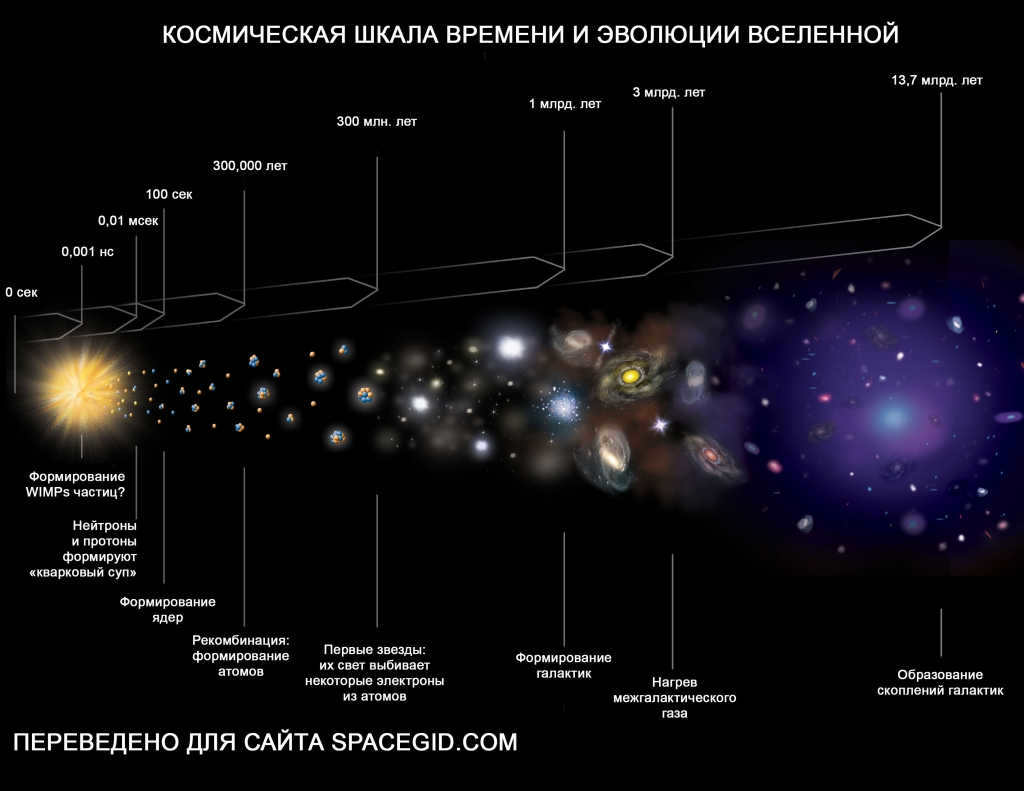

The estimated age of the Universe is approximately 13.7 ± 0.2 billion years. This duration represents the period from when the Universe began expanding up until the present moment. There are numerous methods available for determining this value, which we will explore in the following sections.
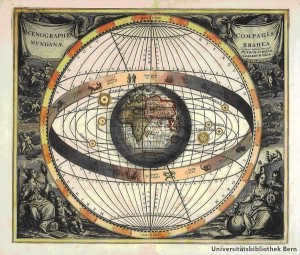
By considering the Earth as the focal point of the universe, ancient scientists trapped themselves in a predicament.
The query about the universe’s age was pondered by philosophers in ancient times. The Greeks and Babylonians claimed that the world is eternal, while the Hindus in 150 BC calculated the precise number – 1 billion 972 million 949 thousand 091 years – which was closest to the truth among their contemporaries. In the 17th century, the English theologian John Lightfoot, after a thorough analysis of biblical texts, proposed that the world was created in 3929 BC.
However, renowned scientists of that era, such as the German astronomer Johannes Kepler and the English physicist Isaac Newton, based their calculations not only on the Bible but also on astronomical observations. Their estimations were not too far off from the theologians, with Kepler suggesting 3993 BC and Newton proposing 3988 BC.
Estimating the Earth’s age
Radioisotope carbon dating is the method used to determine the age of Earth’s fossilized remains of organisms.
Starting from the 18th century, there has been a deliberate effort to study the Earth’s age. One of the early pioneers in this field was Georges-Louis Leclerc de Buffon, a French scientist, who used known physical models to estimate the time it would take for the Earth’s temperature to decrease from its formation until the present day (between 75 to 168 thousand years). According to these models, the Earth initially existed as a luminous sphere. In 1895, John Perry, an engineer from Ireland, reevaluated this estimate and arrived at a figure of 2-3 billion years. It was in 1896 that Antoine Becquerel discovered radioactivity, and 9 years later, British physicist Ernest Rutherford proposed a method to determine the age of rocks on Earth using radioactive decay.
The concept was to determine the extent of decay in a radioactive isotope, utilizing established half-lives to compute the age of a sample. The fundamentals of radioisotope dating were pioneered by American radiochemist Bertram Boltwood. By employing this technique in the 1920s, it was unveiled that certain minerals were approximately 2 billion years old! Evidently, the age of the Earth cannot surpass the age of the Universe itself, therefore this revelation prompted scientists to seek out an effective means of determining the age of the Universe.
At present, it is accepted that approximately 4.54 ± 0.05 billion years have transpired since the formation of Earth as a planet.
The intense heat emitted by white dwarfs
As it is widely known, white dwarfs, which represent the final stage of most stars’ lives, undergo a remarkably slow cooling process. By obtaining the essential characteristics of such stars, it becomes possible to calculate their initial temperature and the rate at which they cool down. These data then enable us to estimate the age of the specific white dwarf in question. The Hubble telescope, having made numerous significant discoveries, identified the coldest white dwarfs in 2002 and 2007. The age of these celestial bodies was determined to be around 11.5-12 billion years. By adding half a billion to a billion years (which represent the age of the stars that gave rise to these white dwarfs), we obtain the minimum age of the universe.
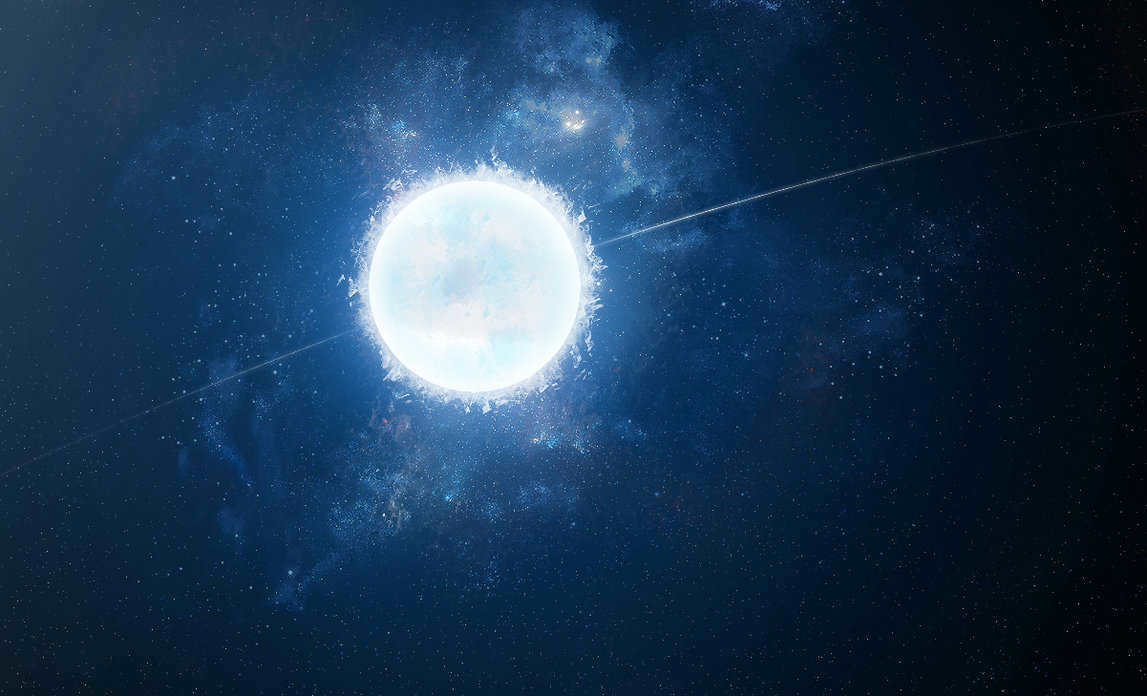
The artist’s concept of a white dwarf
The universe’s maximum possible age is calculated based on the scarcity of cooler white dwarfs, and it is estimated to be around 15 billion years. If the universe were older, scientists would have already observed some of these ancient objects.
Ancient celestial formations
There are over 160 spherical star clusters within the Milky Way, each containing a varying number of stars ranging from thousands to millions. These celestial bodies are bound together by the force of gravity and are believed to have originated from a single gas cloud. Consequently, the majority of stars within these clusters are likely to have been born around the same time. Due to their unique structures and sizes, each star has followed its own evolutionary path, with some already reaching the stage of becoming white dwarfs. By calculating the age of each individual astronomical unit within the specific cluster, it becomes possible to accurately determine the age of the entire globular cluster.
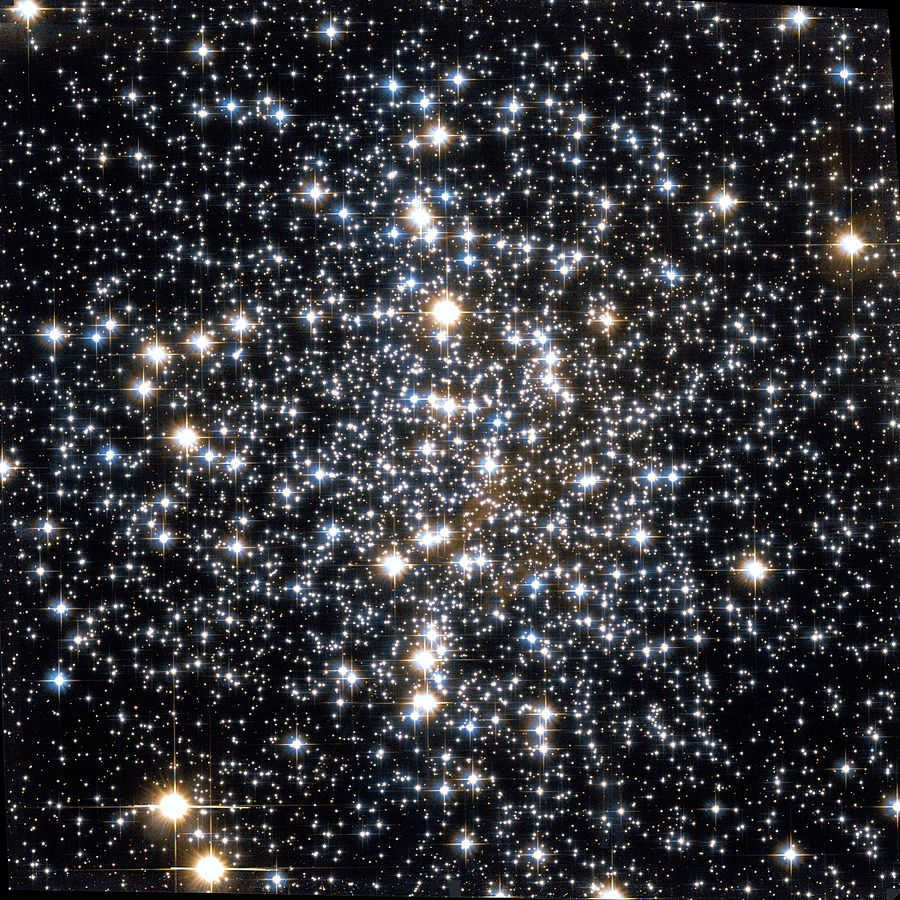
The Milky Way’s oldest star cluster is known as Messier 4 (M4)
Hubble era
However, the issue of the age of the universe was not only addressed by the telescope named after the scientist, but also by the scientist himself, American astronomer Edwin Hubble. He was able to formulate his renowned equation v = H*D, where v represents the rate at which the universe is expanding, D represents the distance from the observed galaxy to the observer, and H represents the Hubble constant, which is inversely proportional to time. The existence of the Hubble constant, as a value that determines the correlation between an object’s distance and its speed of recession, was initially proposed by the priest astronomer from Belgium – Georges Lemaître. According to his concept, the universe originated from a single, metaphorical atom and subsequently began to expand. This theory later came to be humorously referred to as the “Big Bang,” but eventually the term became firmly ingrained in the field of cosmology.

E.P. Hubble holding an image of the Andromeda galaxy
After some time, in 1929, E. Hubble acquired a more precise measurement of the aforementioned constant. It is evident that the age of the universe is directly influenced by the Hubble constant. Initially, based on the existing model of the Universe, scientists calculated that the value inversely proportional to the Hubble constant should be multiplied by 2/3. However, in this scenario, the desired value comes out to be approximately 1.2 billion years, a figure similar to what was proposed by the Hindus in 150 BC. Nonetheless, by the end of the 20th century, there were already astronomical observations indicating an age of 13-15 billion years.
It was discovered that the incorrect estimation was due to misconceptions about the expansion of the Universe. It was not until 1999 that two groups of astronomers were able to demonstrate that the expansion of outer space has actually been accelerating for the past 5-6 billion years, rather than slowing down as previously believed. Based on contemporary calculations using this method, scientists have derived a value of 13.798 ± 0.037 years.
Microwave radiation
Microwave radiation is a form of electromagnetic radiation that is commonly used for cooking and heating food. It is a type of non-ionizing radiation, which means that it does not have enough energy to remove electrons from atoms or molecules. Instead, it primarily works by causing water molecules in food to vibrate, which generates heat and cooks the food. While microwave radiation is generally considered safe for everyday use, it is important to follow proper safety precautions and guidelines to minimize any potential risks.
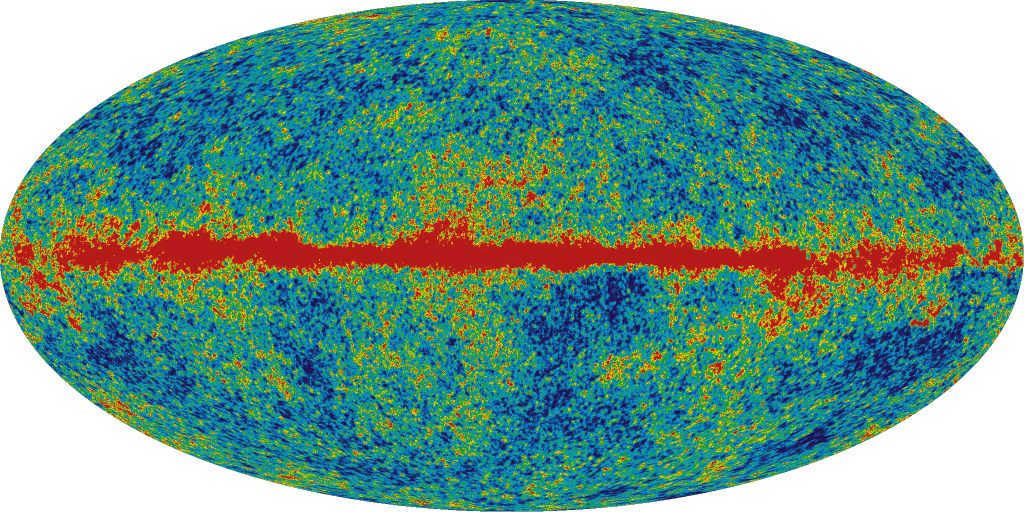
Map showing the distribution of relic radiation. Click to enlarge.
In 2001, NASA launched the Wilkinson Microwave Anisotropy Probe (WNAP) into space to investigate relic radiation. By analyzing its observations, scientists were able to create a new, higher-resolution map of the distribution of relict microwave radiation. This map revealed not only the saturated band emitted by the Milky Way in the center, but also the distribution of relic radiation beyond it. The inhomogeneities in the distribution form a distinct, spotted pattern that is unevenly spread. Through a detailed study of this pattern, scientists have been able to accurately estimate the time it took for it to form after the Big Bang, which is approximately 13.7 ± 0.2 billion years.
By utilizing the aforementioned techniques, researchers have successfully ascertained the precise age of the Universe, a crucial factor in the field of cosmology and comprehending the entirety of our universe as a whole.
If you found this article interesting, don’t hesitate to share it with your friends!
An integral part of determining the age of the Universe is highlighting the various stages it has undergone since the inception of the Big Bang.
The Development of the Universe and its Stages of Evolution
The evolution of the universe can be divided into several distinct phases:
- Planck time – a period ranging from 10 -43 to 10 -11 seconds. During this incredibly brief span, scientists believe that gravitational force separated from other interaction forces.
- The era of quark formation – occurring between 10 -11 and 10 -2 seconds. This period marked the emergence of quarks and the separation of the known physical interaction forces.
- The present epoch – starting 0.01 seconds after the Big Bang and continuing to the present day. During this time, all fundamental particles, atoms, molecules, stars, and galaxies came into existence.
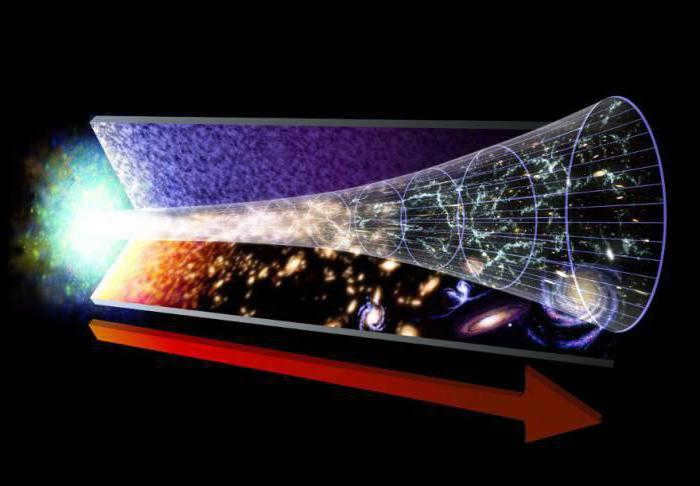
It should be mentioned that a significant epoch in the evolution of the Universe is regarded as the moment when it became permeable to radiation – approximately 380,000 years subsequent to the occurrence of the Big Bang.
Ways of determining the age of the Universe
What is the age of the universe? Prior to attempting to ascertain this information, it is important to acknowledge that the age is measured from the instant of the Big Bang. Currently, no one can definitively state how long ago the Universe came into existence. When considering the general trend, scientists have increasingly concluded that its age surpasses previous estimations.
Recent calculations conducted by scientists indicate that the age of our Universe is approximately 13.75±0.13 billion years. Some experts speculate that this final figure might undergo revision in the near future, possibly extending to fifteen billion years.
Large Star Clusters and Their Role in Determining the Age of the Universe
Scientists rely on the study of vast regions of space that contain massive clusters of stars to determine the age of the Universe. These clusters, with their stars being in close proximity to one another, provide valuable insight into the age of the Universe. By examining the simultaneous birth of stars within these clusters, scientists can accurately estimate their age.
Researchers employ the theory of “stellar evolution” and utilize graphs and multilinear calculations to analyze the data. They take into consideration data from objects within the cluster that have the same age but varying masses. This approach allows scientists to refine their understanding of the age of the Universe.
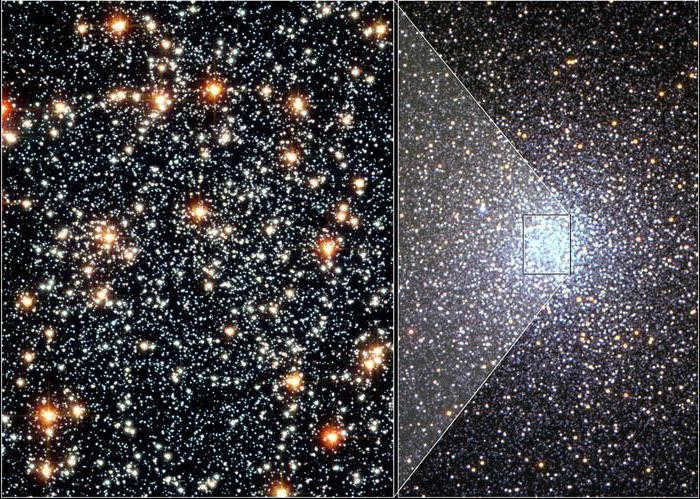
By analyzing these findings, experts can establish the age of the cluster. Scientists calculate the age of the Universe by pre-computing the distance to a group of star clusters.
Was it feasible to precisely determine the age of the Universe? According to scientific computations, the outcome was inconclusive – ranging from 6 to 25 billion years. Regrettably, this approach presents numerous intricacies, resulting in a significant margin of error.
Ancient Space Dwellers
To gain insight into the age of the universe, researchers are studying white dwarfs found within globular clusters, which serve as the successors to red giants in the evolutionary cycle.
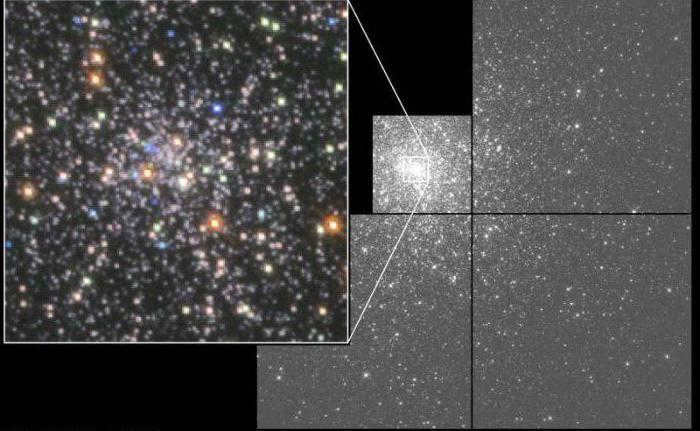

During the transition from one stage to the next, the star’s mass remains virtually unchanged. White dwarfs don’t undergo thermonuclear fusion, so they emit light by using stored heat. By understanding the relationship between temperature and time, it is possible to calculate the star’s age. The age of the oldest cluster is estimated to be around 12-13.4 billion years. However, this method presents challenges in observing relatively faint sources of radiation. Highly sensitive telescopes and equipment are required to overcome this obstacle. The Hubble Space Telescope, known for its exceptional power, is utilized to tackle this particular task.
To ascertain the age of the universe, scientists observe entities composed of fundamental matter that have endured until the present day due to their gradual evolutionary pace. By scrutinizing the chemical makeup of these entities, scientists juxtapose it with data derived from thermonuclear physics. This analysis enables them to deduce the age of the celestial body or cluster. Two separate investigations were conducted by scientists, yielding relatively congruous findings: the first estimates the age to be around 12.3-18.7 billion years, while the second suggests a range of 11.7-16.7 billion years.
Expansion of the Universe and the Mystery of Dark Matter
There are numerous theories and models aimed at estimating the age of the universe, but they often yield conflicting results. However, a more precise method has emerged in recent years, which relies on the observation that the vast expanse of outer space has been continuously expanding since the momentous event known as the Big Bang.
At the very beginning, the universe was much smaller in size, yet it contained the same amount of energy that it possesses today. This remarkable fact sheds light on the mysterious phenomenon of dark matter and its role in the evolution of the cosmos.
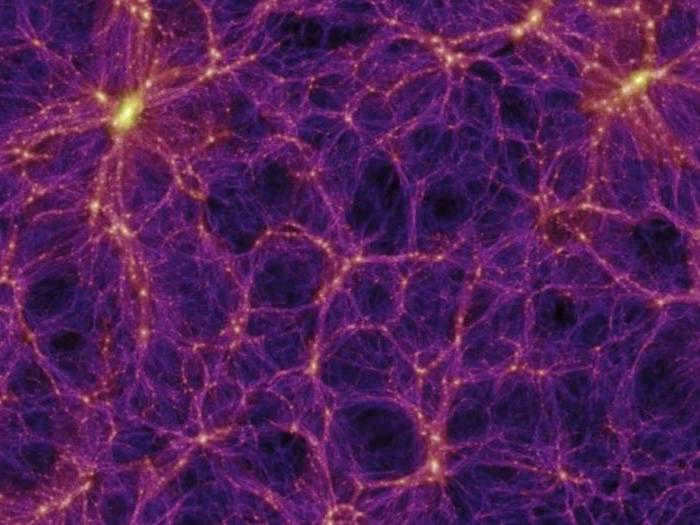
Scientists have used the properties of photons and the presence of black matter to calculate the age of the universe. They have determined that over time, photons “lose” energy and their wavelength increases. According to their calculations, the age of our universe is approximately 13.75±0.13 billion years. This method of calculation is known as Lambda-Cold Dark Matter, which is the modern cosmological model.
The outcome might not be accurate
Nonetheless, no scientist asserts the precision of this outcome. This model incorporates numerous contingent presumptions that serve as a foundation. Nevertheless, currently, this technique of ascertaining the age of the universe is deemed to be the most precise. In 2013, the rate of expansion of the Universe, known as the Hubble constant, was determined. It was measured to be 67.2 kilometers per second.
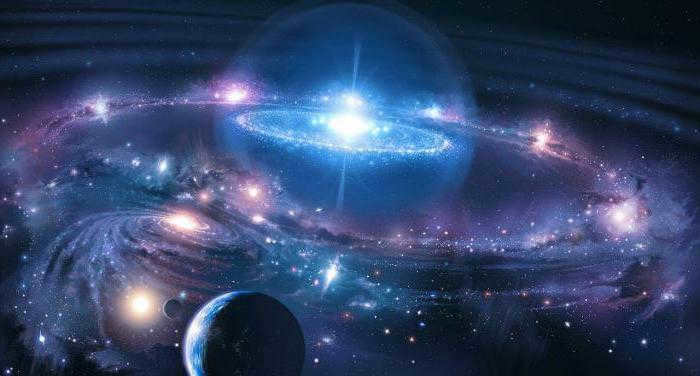
Scientists have recently revised their calculations and now believe that the age of the universe is 13.798 billion years. However, it is important to note that these calculations are based on certain assumptions and models that may change in the future. If new information becomes available that challenges these assumptions, the age of the universe may need to be recalculated.
Alpina Non-Fiction is publishing a fascinating book by geophysicist David Bercovici called The Origin of Everything: From the Big Bang to Human Civilization. This book provides a concise overview of the history of the universe and includes excerpts from the chapter “The Universe and Galaxies.”

Time commenced following a unfathomable, tremendously potent detonation – quite a commendable commencement, isn’t it? Nevertheless, the exactitude of whether this detonation marked the inception of the cosmos or solely the Earth remained a mystery until relatively modern times – specifically, the 20th century. The initial verses of the Bible state: “In the beginning God fashioned the celestial realms and the planet”. In the 17th century, Archbishop James Ascher of Ireland even computed the precise date of this occurrence – October 23, 4004 BC.
Before Ascher, there were several prominent Renaissance philosophers who shared the unconventional belief that time did not have a starting point. One of the most well-known figures from this period was Giordano Bruno, an Italian Dominican friar and thinker who gained fame, primarily due to his martyrdom. Bruno supported the alternative idea proposed by Copernicus in the 16th century, which suggested that the Earth was not the center of the universe and instead revolved around the Sun. However, Bruno took this concept even further by proposing that the Sun was simply a star, similar to the ones we observe in the night sky, and that the planets in our solar system also orbited around it.
However, what is particularly significant for our book is Giordano Bruno’s claim that the cosmos is eternal and boundless in both time and space.
Bruno was not the initial European thinker to express such viewpoints, but it was his concepts that the Catholic Church labeled as heretical, along with an even more offensive rejection of the divinity of Christ and the sacrament of Transubstantiation. Bruno was apprehended in Venice and put on trial before a tribunal, then transported to Rome, where he was once again questioned. The passionate and sarcastic Bruno proclaimed that he would not retract his writings until the Pope or the Lord God Himself informed him that he was mistaken. Both remained silent, and on the first day of Lent 1600, Giordano Bruno was executed by being burned alive in Piazza Campo di Fiori in Rome. Presently, a statue of him stands there, glaring ominously at the cheerful tourists enjoying their meals in the nearby cafés.
Fortunately, since then, scientists are no longer executed by being burned alive for their ideas (at least not literally).

Regardless of our lack of courage – and the mere concept of sacrificing ourselves for works that nobody has read – we possess the capacity to appreciate the past, thus comprehending that false science perishes with its creators, whereas genuine science is everlasting. If our perspectives perish alongside us, then perhaps that is the fate they deserve. However, Giordano Bruno gave up his life for his convictions, emerging as one of the most renowned champions of science. Eventually, his notions were proven to be prophetic, particularly his theory that the Earth was merely one of numerous planets circling one of the countless stars in an infinite and ancient cosmos.
However, Bruno’s notion that the cosmos is boundless in both space and time is false – time had a commencement. The most basic evidence of this lies in the darkness of the nocturnal sky. In an infinitely ancient and infinitely expansive Universe, every portion of the night sky would be populated by stars, and the radiance of this limitless multitude of stars would have had enough time to reach our planet, illuminating the entire nocturnal expanse. Even contemporaries of Giordano Bruno, such as the German mathematician Johannes Kepler and the English astronomer Thomas Digges, acknowledged this photometric paradox, which eventually became known as Olbers’ paradox, named after the German astronomer Heinrich Wilhelm Olbers of the late 18th and 19th centuries. The solution to this paradox was proposed by William Thompson (Lord Kelvin), an English physicist of the 19th and 20th centuries. Prior to him, the American writer and poet Edgar Allan Poe had made a correct conjecture: the Universe must be finite either in its existence through time (thus explaining why the light from the most remote stars has not yet reached us) or in its size (which would account for the absence of stars in every region of the sky), or both. This significant hypothesis later led to the development of the Big Bang theory, as it implied that the universe came into existence at some point in the past and/or not simultaneously everywhere.
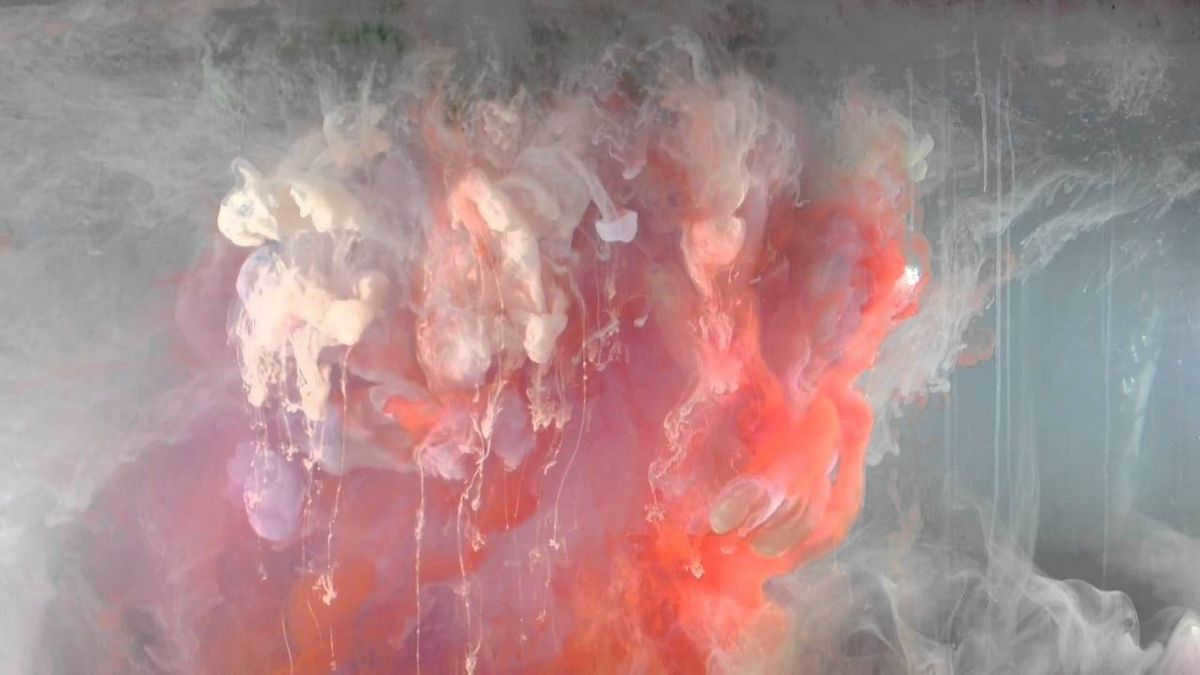
The change in frequency and wavelength of light due to its redshift can be likened to the diminishing sound of an ambulance siren passing us by. Just as the sound waves of the siren experience a decrease in frequency and an increase in length and period of oscillation, the light waves undergo a similar transformation. This phenomenon, known as the redshift of light, provides valuable insights into the movement of galaxies. Specifically, it reveals that the further apart two galaxies are, the faster they are moving away from each other. In other words, galaxies are constantly drifting apart, illustrating the expanding nature of our universe.

Prior to Edwin Hubble’s groundbreaking discovery that galaxies are moving apart from one another, it was Belgian astronomer Georges Lemaître and Russian physicist Alexander Friedman who independently arrived at the conclusion that the Universe is in fact expanding. Both scientists utilized Einstein’s general theory of relativity, although it is worth noting that Einstein himself initially dismissed their calculations before eventually coming to accept them. The subsequent observations made by Hubble ultimately served to validate Lemaître and Friedman’s theories regarding the expanding nature of the Universe.
If the Universe is finite in time and space, and yet it is undergoing expansion, then if we reverse this expansion, we will observe that all of its mass and energy was once concentrated in an incredibly small and hot point that Lemaître referred to as the “cosmic egg”. The initial expansion of this mass in the first moments of the emergence of the universe was humorously dubbed the Big Bang by Fred Hoyle, an astronomer from Cambridge University (because he strongly disliked the idea). The name stuck, although, contrary to the phrase I began this chapter with, the term “explosion” is not entirely accurate in describing this phenomenon.
An explosion occurs when high-pressure gas abruptly separates from low-pressure gas, creating a shock wave. This phenomenon happened when the entire mass and energy of the universe was compressed into a minuscule point, leaving no space for the universe to expand. As the universe expands, it also extends the boundary of our world, where there is a complete absence of light, energy, space, and time.
It is truly challenging to comprehend, isn’t it?

In the 1960s, Arno Penzias and Robert Wilson, two American scientists, made a significant discovery. They detected a unique form of radiation known as the cosmic microwave background radiation or relic radiation. This radiation permeates the entire Universe in a uniform manner, challenging the notion that outer space is lifeless and frigid. Instead, it is filled with this relic radiation, which adds a hint of warmth to the otherwise freezing temperature of space, bringing it to -270 °C. This lingering heat serves as evidence of a previous, hotter state of the Universe that existed following the explosive event known as the Big Bang.
By studying the Big Bang theory and observing the expansion of the Universe, scientists have been able to estimate its age. By calculating the time it took for the Universe to expand from a single point to its current size, taking into account the Hubble constant and temperature, it is estimated that the Universe is approximately 14 billion years old, with a margin of error of 1 billion years. This estimation is supported by studying the oldest objects in the Universe, which are mostly small stars with slow burning rates. However, these objects could not have formed until at least 500 million years after the Big Bang, so they cannot provide an accurate determination of the Universe’s age. The current estimate for the age of the Universe is around 13.8 billion years.
The concept of the Big Bang theory goes beyond simply explaining the expansion of the Universe from a minuscule point to its current colossal size. A sequence of occurrences that altered its original condition ultimately dictated the arrangement of substance and the arrangement of the Universe.

During the time span from the initial fraction of a millisecond to one minute after the occurrence of the Big Bang, a remarkable series of events unfolded. Without venturing into the depths of speculation, it is reasonable to postulate that during the initial phase, the Universe possessed an extraordinary density and temperature, resembling a minuscule sphere of unimaginable energy. As the Universe expanded and cooled, various forms of matter, energy, and even fundamental forces emerged. This process bears some resemblance to the cooling and condensation of vapor into liquid and then solid ice. Each phase transition brings about a change in the state of matter, be it gaseous, liquid, or solid, in what is known as a phase transition. However, in the early moments of the Universe, these transitions were far more peculiar and enigmatic, and we have yet to fully comprehend the initial phase from which they originated.
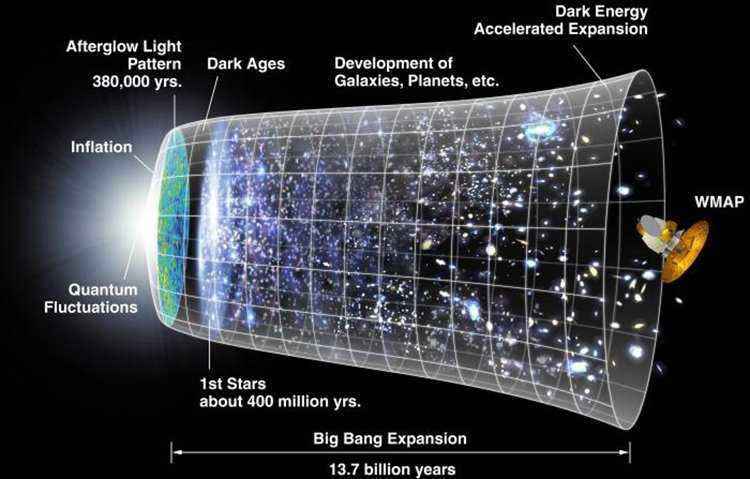
In ancient times, the cosmos was perceived as a timeless and unchanging entity. However, in 150 BC, it was discovered that the universe is approximately 2 billion years old. Fast forward to the 17th century, when the scientist J.G. Bennett delved into the study of the cosmos. Drawing upon information from the Bible, Bennett proposed that the universe came into existence around 3929 BC.
The founders of modern science, Isaac Newton and Johannes Kepler, analyzed cosmic data and reached the conclusion that the universe originated between 3993 and 3988 BC.
Determining the age of the Earth
In the pursuit of determining the age of the Earth, researchers embarked on a quest in the latter half of the 18th century. One such pioneer was Georges-Louis Leclerc, a Frenchman who sought to estimate the duration it would take for the planet to cool down from its initial formation to its current state (a span of up to 168 thousand years). Leclerc’s calculations were founded on physical models, which depicted the Earth as a luminous spherical material.
In 1895, J. Perry, an engineer from Ireland, conducted his own calculations and arrived at an estimate of 3 billion years for the age of Earth. A year later, A. Becquerel defined radioactivity, and another 9 years later, a scientist from Britain named E. Becquerel developed a method to estimate the age of rocks on Earth using isotopic decay. The concept involved determining which portion of an isotope had decayed over time by measuring significant half-lives, resulting in a calculation of the sample’s age. The fundamental techniques of radioisotope dating were established by B. Boltwood, a radiochemist from the United States. By utilizing this method, researchers in the 1920s were able to determine that many mineral objects had been in existence for at least 2 billion years.
Techniques for Estimating the Age
The estimated age of the universe is approximately 13.8 billion years. There are two reliable methods for determining the timeframe of the universe’s formation. The initial approach involves examining the luminescence emitted by white dwarfs. These massive and hot celestial bodies represent the final stage in the life cycle of stars that have exhausted their thermonuclear material. Composed primarily of carbon and hydrogen, white dwarfs have a thin atmosphere that contains traces of helium. The central region of these stars reaches temperatures of several million Kelvin. As it gradually cools, the stored energy causes it to emit light. By studying clusters of white dwarfs, astronomers have determined that they are approximately 12-13 billion years old.
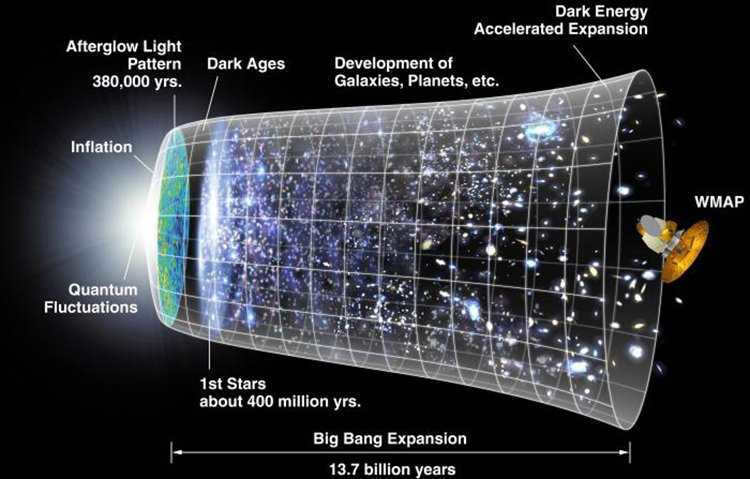
One method for determining the age of the universe involves studying its expansion. Scientists gather data such as:
- Changes in the brightness and distance between celestial objects.
- The composition of outer space, which consists mostly of dark energy and matter. If simple matter had predominated, the universe would be no older than 10 billion years.
- The pattern of expansion in outer space.
After collecting all this information, scientists extrapolate it backwards in time, resulting in an estimated age of 13.8 billion years.
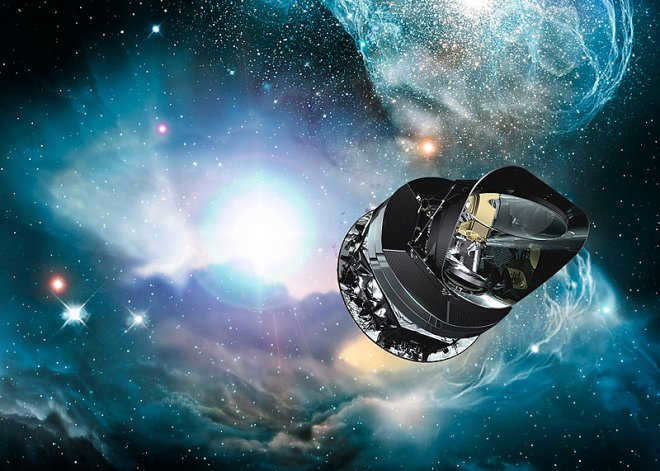
The Planck telescope was activated in May 2009 with the primary goal of accurately determining the age of our Universe. Its main function was to conduct an extensive scan of space in order to capture the most comprehensive image of the radiation emitted by all celestial objects resulting from the Big Bang event.
The scanning process was carried out in two stages, with preliminary results obtained in 2010 and the final findings summarized in 2013. The study of outer space yielded a number of fascinating discoveries.
The Results of Research by the European Space Agency
The European Space Agency (ESA) has recently published fascinating findings from their research, which utilized data collected by the powerful “Planck” telescope. This research has provided a clearer understanding of the Hubble constant, which determines the rate of expansion of the Universe. According to the ESA’s findings, the Universe is expanding at a rate of 67.15 kilometers per second per parsec. To put this into perspective, a parsec is the equivalent of 3.2616 light years in cosmic distance. Imagine two galaxies moving away from each other at a speed of approximately 67 km/s to grasp the scale of this expansion. While these numbers may seem insignificant on a cosmic scale, they are nonetheless established facts.
Related article: ballistic missile: intercontinental, speed, flight altitude, launch, trajectory, creation, designer
By utilizing data gathered by the Planck telescope, scientists have been able to determine the age of the universe with precision: it is estimated to be 13.798 billion years.
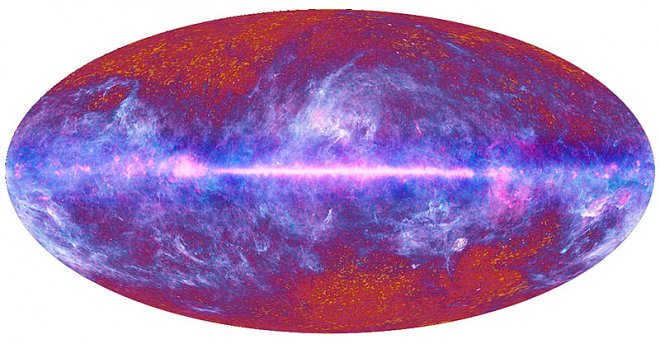
Photo obtained from the data collected by the Planck telescope.
This research conducted by the European Space Agency (ESA) has provided insights into the composition of the Universe. It has revealed that the mass fraction of “ordinary” physical matter is approximately 4.9%, while dark matter accounts for about 26.8%.
Furthermore, the Planck telescope has also confirmed the existence of a cold spot in the far reaches of cosmic space. This area exhibits an extremely low temperature and remains a mystery to scientists, lacking clear explanations.
Aside from cosmological techniques, there are alternative methods to determine the age of the Universe, such as examining the age of chemical elements. The process of radioactive decay can provide valuable insights.
Another approach involves estimating the age of stars. By evaluating the luminosity of the oldest stars, specifically white dwarfs, a team of researchers in 1996 concluded that the age of the Universe must be at least 11.5 billion years. This finding aligns with the age of the Universe derived from the updated Hubble constant.
White dwarfs
During the final phase of their existence, the majority of stars experience a significant cooling process that lasts for a considerable amount of time. By calculating the basic characteristics of these celestial bodies, such as their initial temperature and the rate at which they cool down, it becomes possible to estimate their age. The renowned Hubble telescope has played a crucial role in numerous breakthroughs, including the discovery of the coldest stars known to humanity.
These stars have been in existence for at least 11-12 billion years. Taking into account the time required for the formation of such stars, we can determine the minimum age of the Universe. This limit is based on the absence of less heated stars. If the Universe were older, scientists would have already detected these types of stars.
New star formations
Several significant aspects are observed in this regard:
- The Milky Way contains over 160 spherical star clusters, each consisting of hundreds of thousands of stars.
- These stars are connected by gravity, likely originating from a single gas cloud.
- Most of these formations were created during the same period of time.
- Each star had its own evolutionary path, depending on the size and characteristics of the cluster, with some remaining as white dwarfs.
- By determining the lifespan of each element within the cluster, it is possible to accurately estimate the age of the Universe.
The Hubble telescope system has aided astronomers in studying 41 spherical objects within the Milky Way, leading to the discovery that all galaxy formations are over 10 billion years old, with the oldest formation being more than 12.7 billion years old. When considering the formation of stars, the lower limit of the universe’s age is estimated to be around 13 billion years.
Hubble’s Discoveries
The exploration of the universe has been a focus of American scientist E. Hubble, who was honored with a space telescope named after him. Hubble formulated the equation v = HxD to capture the essence of his findings:
- v represents the rate of expansion;
- D measures the distance between the observer and the universe;
- H, known as Hubble’s constant, is inversely proportional to time.
The significance of the latter constant, which determines the relationship between distance and the rate of cosmic expansion, was initially proposed by Belgian astronomer J. Lemaître. His theory is based on the idea that the universe originated from a single hypothetical atom and has been expanding over time (known as the Big Bang theory).
In 1999, two teams of astronomers discovered that the incorrect estimation of the expansion of the Galaxy was due to a false perspective. These scientists were able to demonstrate that for the past 6 billion years, the universe has been expanding at an accelerated pace, contrary to previous beliefs that it was slowing down. As a result of modern calculations, the age of the universe has been determined to be 13.8 billion years, with a margin of error of 0.037 years.
Relic Radiation: Unveiling the Secrets of the Universe
In the summer of 2001, NASA launched the WNAP spacecraft with the sole purpose of studying microwave radiation. The mission aimed to delve deeper into the mysteries of the universe and shed light on the origins of relic pulses. Thanks to groundbreaking research, a new and improved map of relic pulse distribution was created, boasting a resolution 35 times higher than its predecessor.
Upon careful analysis of the data, scientists made a remarkable discovery. In addition to the densely populated central band of the Milky Way, they observed the presence of microwaves extending beyond its boundaries. These microwaves formed an intriguing, irregular pattern, resembling a collection of distinct and scattered bodies.
The intricate configuration of these structures proved to be a valuable clue in determining their origins. Through meticulous examination, researchers were able to pinpoint the exact period of their formation. The evidence pointed to a staggering 13.7 billion years (with a margin of error of 0.2 billion years). These findings not only shed light on the age of our galaxy, but also contribute to our overall understanding of the vast and complex universe.
The Origin of the Universe
In order to determine the age of the Universe, it is essential to grasp the concept that it has been expanding and cooling over time. This means that in the past, the Galaxy was denser and hotter than it is now. During the earliest stages, the Universe had a smaller volume and the lengths of photon particles were shorter. However, as space expanded, these photon particles were stretched, affecting their energy and temperature. The further back in time we go, the higher these values will be until we reach the stage of the Big Bang.
According to the principles of relativity, a universe similar to ours exhibits the following characteristics:
- Uniform density, regardless of scale
- Identical properties at all locations
- Identical properties in all directions
- The occurrence of the Big Bang simultaneously at every point is a distinctive phenomenon.
There exists a special relationship between the Galaxy’s age and its expansion throughout its development. If it were feasible to quantify the latter, while considering the extent to which the Universe has expanded thus far, humanity would possess precise knowledge about the constituents that gave rise to the Universe.
The research on spherical star clusters
When discussing the age of the Universe, it is important to mention the study of spherical clusters of stars. These clusters exist in the outer region of the Milky Way and orbit around its center. By determining the formation date of these clusters, scientists can establish the lower limit of the Universe’s age.
Although the method is technically complex, its underlying concept is relatively simple. All clusters originate from the same cloud, which means they are formed around the same time. Over time, they gradually deplete their hydrogen reserves in a predictable manner. This depletion eventually leads to the formation of a white dwarf or a neutron star.
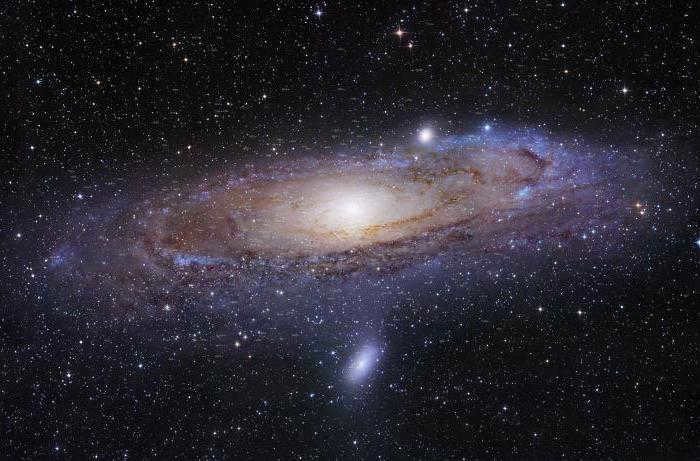
The precise age of the Universe
Despite utilizing the cosmological model to determine the duration since the Big Bang, scientists continue to refine and revise the collected data.
In May 2009, the Planck telescope was deployed, specifically designed for prolonged operation in outer space. It enabled the scanning of radiation emitted by various celestial bodies. The initial findings were obtained by astronomers in 2010, finally allowing for an accurate estimation of the age of the universe in 2013.
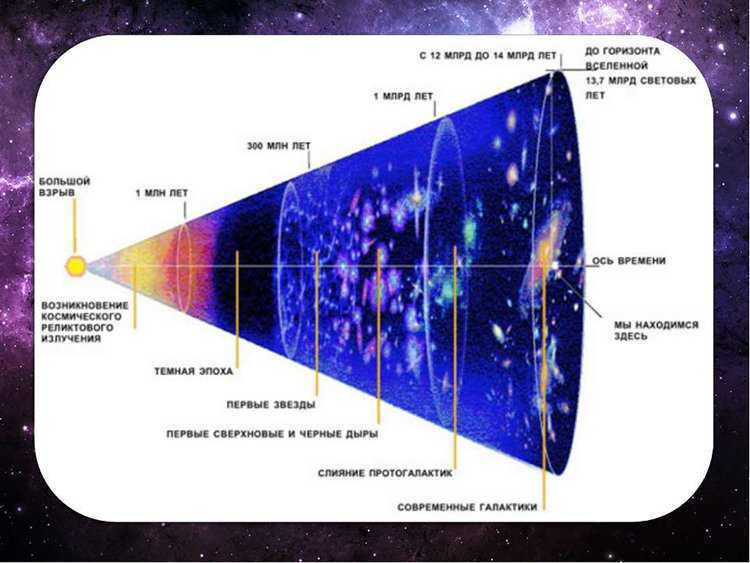
Scientists have discovered that the expansion rate of the boundaries of space is 67.15 km/s. This indicates that 13.798 billion years have elapsed since the occurrence of the Big Bang.
Universe Expansion
Planck’s computations appear to occur in space, while you and I are located on Earth, which means that we observe smaller angular scales and our computations simply cannot be identical. As time has passed, the disparity between the two methods has become insurmountable due to measurement uncertainties. However, it cannot be ruled out that both methods are flawed in some manner, or perhaps there is some new physics that neither side has comprehended.
Each time we gaze at the stars, we are witnessing the past.
When studying relic radiation or supernovae star explosions, it is possible that there are minor biases in the data sets that have not been fully taken into account. However, as our observational tools and techniques continue to improve, it becomes increasingly challenging for us to comprehend the true nature of what is happening. Alternatively, it could be that there is something fundamental about the universe that remains beyond our current understanding.
According to Prof. Isobel Hook from Lancaster University in the UK, there are several theories attempting to explain this discrepancy. One theory suggests that additional early expansion in the universe makes relic radiation a “measure” of other physical quantities. However, these theories also face problems. The authors of the study acknowledge their uncertainty regarding which side they support, but the argument itself is captivating.
There are various theories that strive to elucidate this disparity. According to one theory, the relic radiation serves as a “measure” for other physical quantities due to additional early expansion in the universe. However, these theories encounter difficulties as well. The researchers admit their lack of certainty about their stance, but the debate is intriguing.
How old is the solar system?
The solar system has been in existence for approximately 4.568 billion years. Its age has been determined through the study of isotopes found in meteorites and rocks, using radioactive decay. Both potassium and uranium isotopes were formed at the same time as the solar system, making their age comparable to that of comets and rocks. However, due to the destruction of most rocks over time, the age of the solar system is now commonly determined using meteorites. Radioactive dating techniques are employed to analyze the decay of isotopes in meteorites. As a result, the oldest meteorites have been found to be 4.568 billion years old. It is important to note that this age may change in the future, as scientists face challenges in finding meteorite remains that have not been altered by Earth’s tectonic plates.
The formation of the solar system
According to scientific theories, the solar system came into existence as a result of a disruption in a gas and dust cloud surrounding a supernova star. This disturbance caused a powerful explosion and waves that compressed the cloud, leading to its collapse. Gravity played a crucial role in keeping the gas and dust particles together, giving rise to the formation of the Solar Nebula. As the cloud started to rotate at an alarming speed, its center became increasingly dense and hot. Simultaneously, a disk composed of gas and dust materialized around the cloud. The center of this disk was extremely hot, while its edges remained relatively cool. With time, the disk gradually thinned out, enabling the particles to adhere to one another and form clusters. Eventually, these clusters evolved into the planets and satellites that constitute the present-day solar system. As the cloud continued to heat up, the Sun took shape, and the solar system was born.
The Future of the Solar System
The fate of the solar system is intrinsically linked to its primary source of energy, the Sun. As a star in its middle years, the Sun is projected to continue burning for another 5 billion years. However, once this timespan elapses, the Sun will deplete its hydrogen reserves within its core. The core will contract due to gravitational forces and the fusion of helium and oxygen atoms, resulting in an increased release of energy. Consequently, the Sun will expand to a size 100 times larger than its current state. During this process, it will engulf Mercury and Venus, while its color will transition from yellow to red. As for Earth, if it manages to escape being consumed by the Sun, the extreme heat emitted by the expanding star will scorch the planet’s atmosphere. Additionally, the oceans will evaporate, rendering the Earth uninhabitable.
- https://spaceworlds.ru/vselennaya/vozrast-vselennoj.html





